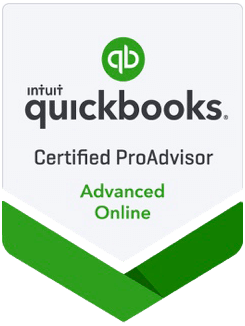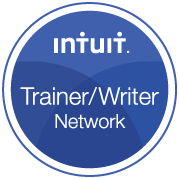Advanced Bookkeeping in QuickBooks Online: Moving Beyond the Basics
So, you’ve mastered the basics of QuickBooks Online (QBO). You can send invoices, categorize transactions, and run basic reports. That’s fantastic! But are you ready to take your skills to the next level with advanced bookkeeping in QuickBooks Online?
This isn’t about clicking the right buttons; it’s about understanding the deeper bookkeeping principles and using QBO’s features creatively to get the insights you need to make informed business decisions. Whether you’re a bookkeeper or a small business owner, this knowledge will empower you to leverage QuickBooks’s features to their fullest, bringing you new insights into your operations, and helping you plan for the future.
Cash vs. Accrual: Choosing the Right Lens
One of the most fundamental bookkeeping concepts is understanding the difference between cash and accrual accounting. Cash-based accounting recognizes income and expenses when money changes hands. You get paid, it’s income. You write a check, it’s an expense.
Accrual accounting, on the other hand, recognizes income when you earn it, even if you haven’t received payment, and expenses when you incur them, even if you haven’t paid the bill yet. This gives you a clearer picture of your ongoing financial performance and allows you to track accounts receivable (unpaid invoices) and accounts payable (unpaid bills).
While most small businesses file their taxes on a cash basis, it’s often beneficial to run reports on an accrual basis to gain a deeper understanding of your business’s financial position. The beauty of QBO is that you can set your default report basis independently of how you file your taxes, giving you the flexibility to analyze your data in both ways.
Managing Unapplied Payments: When Dates Don’t Align
One of the quirks you might encounter, especially when running cash-based reports, is the dreaded “unapplied cash payment income” or “unapplied cash payment expense” line. This usually pops up when a payment is dated before the corresponding invoice or bill. It might seem alarming, but often it’s just a dating mismatch that can be easily corrected by editing the transaction dates.
Cleaning Up Past Mistakes: The Cash vs. Accrual Dilemma
Let’s face it, mistakes happen. But how you handle them depends on your accounting method. With cash-based accounting, fixing past due accounts receivable or accounts payable is fairly straightforward, as unpaid invoices and bills didn’t impact your books. You can simply void or even delete erroneous transactions.
Accrual accounting, however, requires a bit more finesse. Because past transactions have already affected your financial statements, you need to compensate for any corrections in the current period. This typically involves creating credit memos (for income) or vendor credits (for expenses) to offset the original entries, ensuring your books accurately reflect your financial reality.
Unlocking the Power of Journal Entries and Zero Dollar Transactions
Journal entries are powerful tools for making adjustments, especially when moving money between balance sheet and profit and loss accounts. They’re essential for tasks like setting up opening balances, managing prepaid expenses and deferred revenue, allocating overhead expenses, and recording depreciation.
However, reliance on journal entries can muddy the waters and obscure the true picture of your business activity. Whenever possible, prioritize using QBO’s forms (like invoices, bills, checks, etc.) to capture transactions, as these forms are designed to automatically handle the underlying debits and credits.
Some QBO reports are based on the forms themselves, and while using Journal Entries may give you the right report total for taxes, they aren’t incorporated into QBO’s automations. For example, plugging the Inventory Assets with a journal entry instead of using an Inventory Adjustment means that all future COGS calculations will be incorrect.
Zero dollar transactions, which use forms like checks or sales receipts, offer a clever workaround for achieving similar results as journal entries while still leveraging QBO’s built-in functionality. This allows you to take advantage of features like product and service tracking, clearing accounts, and class allocations, providing a more comprehensive and insightful view of your financial data.
Prepaid Expenses and Deferred Revenue: Smoothing Out the Bumps
Prepaid expenses and deferred revenue are common scenarios where timing is everything. Prepaid expenses, like annual insurance premiums, involve paying for an expense upfront but recognizing it over time. Deferred revenue, like annual subscriptions, involves receiving payment upfront but recognizing the income as you deliver the service.
Both situations require you to spread the financial impact over the relevant period, ensuring your reports accurately reflect your business activity. This can be accomplished manually using journal entries or zero dollar transactions, or by using the automated revenue recognition feature in QBO Advanced.
Job Costing and Overhead Allocation: Unveiling the True Costs
Accurately allocating expenses is crucial for understanding the profitability of different projects, customers, or classes. Journal entries and zero dollar transactions allow you to distribute payroll wages, overhead costs, and other expenses to specific jobs or classes, giving you a granular view of your financial performance. This detailed analysis empowers you to make data-driven decisions about pricing, resource allocation, and overall business strategy.
Mastering Equity Management: Keeping Your Financial House in Order
Managing equity accounts is another critical aspect of next-level bookkeeping. Equity represents the owner’s stake in the business and includes contributions, distributions, and retained earnings. Each business structure (sole proprietorship, LLC, partnership, S Corp) has specific terminology and accounting practices related to equity.
Closing out equity accounts at the end of the year helps you track contributions and distributions over time, giving you a clear picture of the owner’s financial activity and the company’s overall financial health. I use a technique I call “Bank of Bob,” providing a clever workaround for managing personal funds used for business expenses. Create a bank account called Personal Expenses used (which I usually name as “Bank of [Owner’s Name]”, and use it to enter all these expenses using normal transactions. At the end of the month, transfer the balance to Owner Investments. This ensures transparent expense tracking and owner contribution recognition, because you’ll have all the information you usually track, including the Vendor, date, description, classes, and even custom fields.
Ready to Take Your Bookkeeping Skills to the Next Level?
If you found this blog post helpful and want to go deeper into advanced QuickBooks Online strategies, I invite you to join my online course, Next-Level Bookkeeping in QuickBooks Online. This course is designed to help you move beyond the basics and truly unlock the power of QBO for your business or your clients.
In this course, you’ll learn how to:
- Master the differences between cash and accrual accounting and use them to your advantage.
- Confidently clean up past mistakes and maintain pristine financial records.
- Unlock the potential of journal entries, zero dollar transactions, and advanced reporting tools.
- Simplify complex tasks like prepaid expenses, deferred revenue, and job costing.
Don’t let advanced bookkeeping concepts intimidate you. With my course, you’ll gain the skills and confidence to tackle any bookkeeping challenge QBO throws your way.
Ready to take the leap? Enroll in Next-Level Bookkeeping in QuickBooks Online today and elevate your financial expertise! I can’t wait to help you achieve bookkeeping mastery.







0 Comments